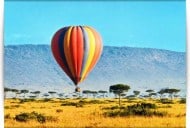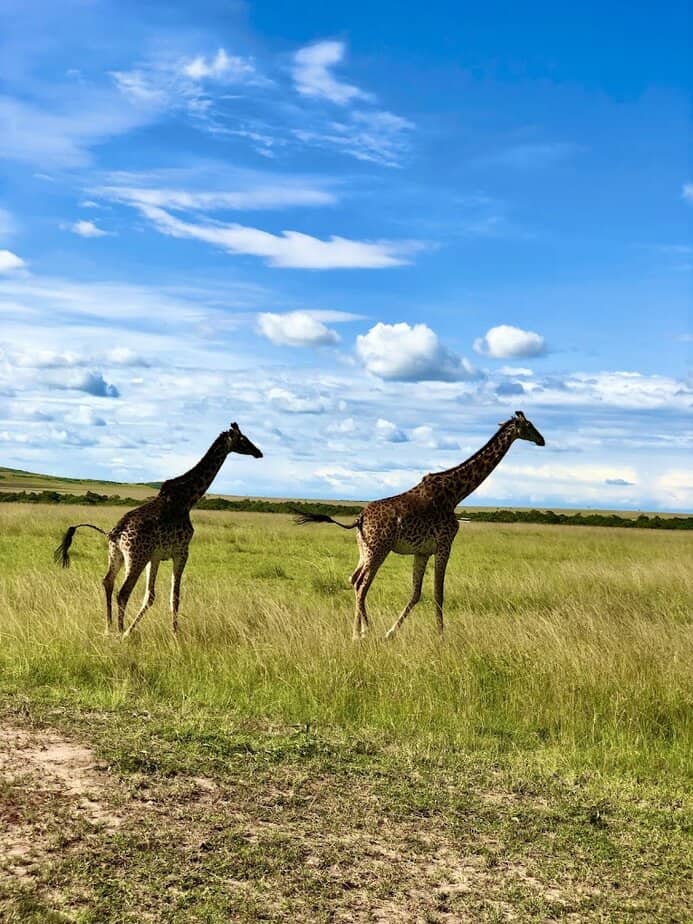
Which Kenyan Safari Is Best?
Which Kenyan Safari Is Best? Discover Your Perfect Adventure
1: Introduction – Why a Kenyan Safari?
Introduction: Why a Kenyan Safari Should Be at the Top of Your Bucket List
When people imagine Africa, they often picture wide-open savannahs teeming with wildlife, dramatic sunsets over acacia trees, and thrilling encounters with nature’s most majestic animals. That image comes to life in Kenya, one of the world’s most iconic safari destinations.
Kenya is the birthplace of the African safari—a Swahili word that means “journey.” It’s where some of the most awe-inspiring natural spectacles occur, like the Great Wildebeest Migration in the Masai Mara, or the quiet grace of elephants silhouetted against Mount Kilimanjaro in Amboseli. Whether you’re a seasoned explorer or a first-time traveler, Kenya offers a safari experience that blends wild beauty, cultural richness, and ecological diversity.
From its world-renowned national parks to hidden gems known only to experienced travelers, Kenya boasts a variety of ecosystems and landscapes—each offering unique wildlife encounters. You can see the Big Five (lion, elephant, buffalo, leopard, rhino), photograph rare species like the Grevy’s zebra or the gerenuk, and immerse yourself in traditional Maasai or Samburu cultures.
Kenya’s appeal lies not only in what you’ll see but how you’ll experience it. Picture waking up in a luxury tent to the sounds of hyenas cackling in the distance, enjoying gourmet bush breakfasts, and ending your days with sundowners while elephants roam nearby. You can fly between destinations, take scenic road safaris, or even go on guided walking safaris for a more immersive connection to the land.
But with all this choice comes one big question: Which Kenyan safari is best for you?
In this in-depth guide, we’ll explore Kenya’s top safari destinations, what makes each one unique, and help you choose the best safari experience tailored to your travel style, interests, and budget.
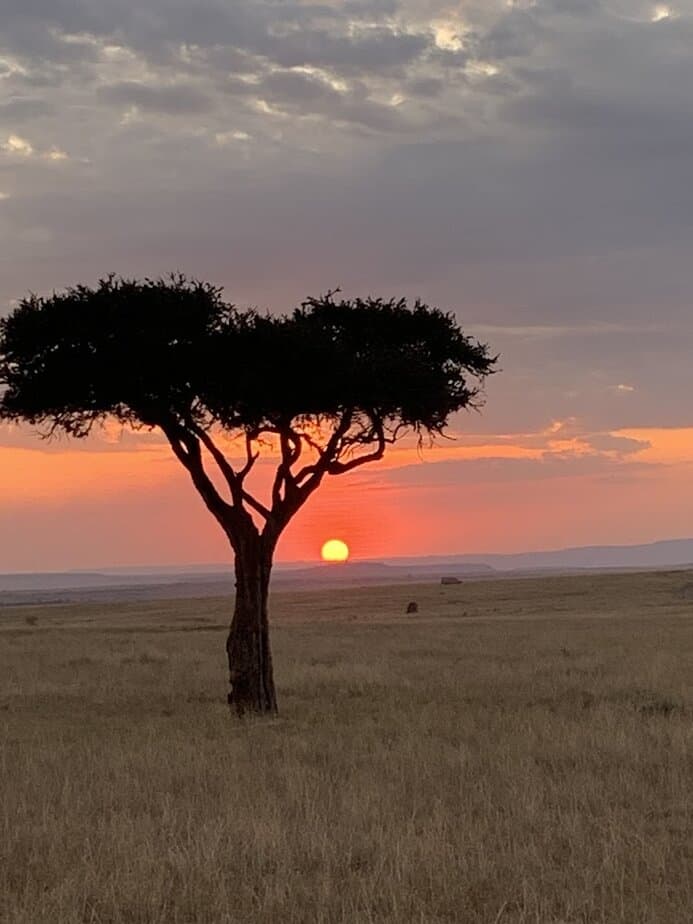
Top Kenyan Safari Destinations
1. Masai Mara National Reserve – Best for Big Five & The Great Migration
No list of Kenyan safaris is complete without the iconic Masai Mara National Reserve. Covering over 1,500 square kilometers of golden grasslands, rolling hills, and acacia-dotted savannah, this legendary park is the crown jewel of Kenya’s safari circuit.
Located in the southwest of Kenya and bordering Tanzania’s Serengeti National Park, the Mara is famed for its abundant wildlife, particularly the Big Five—lion, leopard, elephant, buffalo, and rhino. It’s also the stage for one of the most dramatic wildlife spectacles on Earth: the Great Wildebeest Migration.
Why the Masai Mara is the Ultimate Safari Destination
1. The Great Migration (July to October)
Every year, between July and October, over 2 million wildebeest, zebras, and gazelles cross into the Masai Mara from the Serengeti. This ancient cycle is driven by the rains and the search for greener pastures. The result is a breathtaking display of nature in motion—complete with dangerous river crossings, predator-prey chases, and incredible photo opportunities.
River crossings at the Mara and Talek Rivers are particularly intense, as crocodiles lie in wait and herds leap into the water en masse. Witnessing this moment is often described as a “bucket-list” experience.
2. Incredible Big Cat Sightings
The Masai Mara is often referred to as “The Kingdom of Lions”. It’s one of the best places in Africa to see prides of lions, elusive leopards, and speedy cheetahs. Several wildlife documentaries, including BBC’s Big Cat Diary, were filmed here due to its high predator density.
3. Cultural Immersion with the Maasai People
A visit to the Mara isn’t just about animals—it’s about people too. The Maasai, one of Kenya’s most well-known indigenous groups, inhabit the areas surrounding the reserve. Many safari lodges offer opportunities to visit Maasai villages (enkangs), learn about their semi-nomadic lifestyle, participate in dances, or even enjoy storytelling around a traditional campfire.
4. Accommodation for Every Budget
From ultra-luxurious tented camps like Angama Mara and Mahali Mzuri, to eco-conscious options and budget-friendly lodges, the Mara caters to all types of travelers. Many camps are located along riverbanks or on private conservancies, offering exclusive game drives and walking safaris.
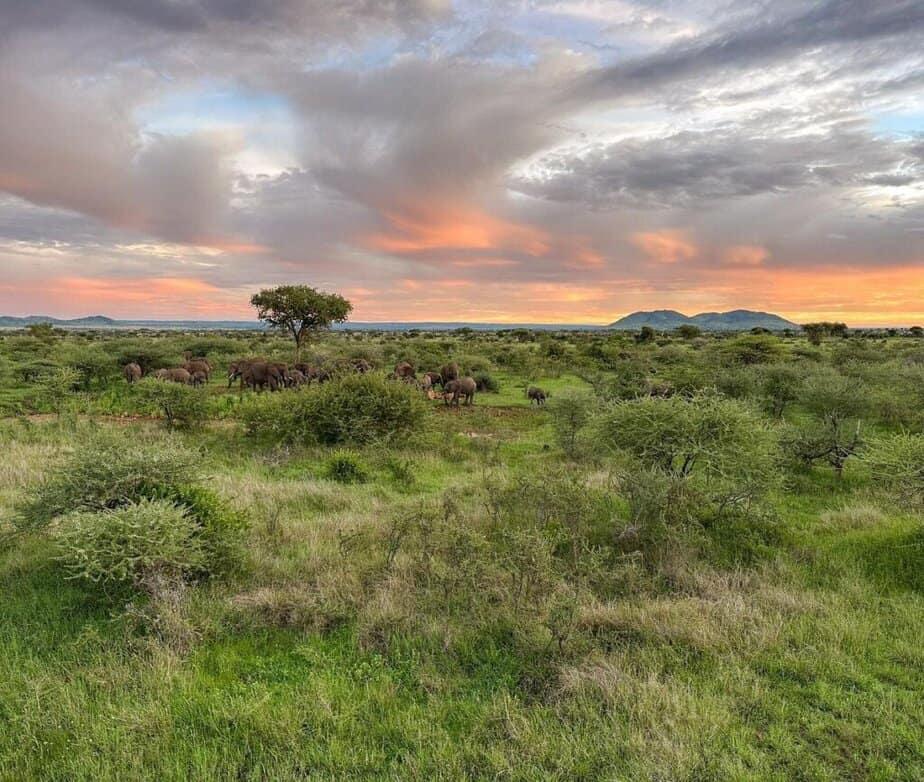
5. Hot Air Balloon Safaris
Few experiences compare to floating silently above the Mara at dawn in a hot air balloon, watching elephants and antelope graze below as the sun rises over the plains. Most balloon safaris conclude with a champagne breakfast in the bush—an unforgettable touch of safari romance.
Travel Tips for the Masai Mara
- Best Time to Visit: July–October (for the migration), but wildlife is excellent year-round.
- Accessibility: Reachable by road (5–6 hours from Nairobi) or by daily scheduled flights (approx. 45 minutes).
- Ideal For: First-time safari-goers, wildlife photographers, luxury travelers, honeymooners.
The Masai Mara offers the quintessential safari experience—one that combines raw wildlife encounters with world-class comfort and culture. It’s no surprise many travelers call it the best safari destination in Kenya.
Next, we’ll explore Amboseli National Park, known for its incredible elephant herds and views of Mount Kilimanjaro.
2. Amboseli National Park – Best for Elephant Encounters and Scenic Views
Amboseli is one of Kenya’s most photogenic national parks. Located in the southern part of the country, near the Tanzanian border, it offers a striking contrast of open plains, swamps, acacia woodland, and, most famously, snow-capped views of Mount Kilimanjaro—Africa’s tallest mountain.
Why Choose Amboseli?
1. Elephant Paradise
Amboseli is home to some of Africa’s largest and most studied elephant populations. The elephants here are known for their impressive tusks and social behavior. Visitors often see families wading through the wetlands, babies playing in mud baths, or herds silhouetted against Kilimanjaro’s peak.
The elephants of Amboseli are central to conservation efforts, including the work of the Amboseli Trust for Elephants, which has studied and protected the population for decades.
2. Picture-Perfect Scenery
The Kilimanjaro backdrop provides a postcard setting for safari photos, especially in the early morning when the sky is clearest. The contrast between the savannah’s golden hues and the mountain’s icy summit is nothing short of spectacular.
3. Birdwatcher’s Haven
Amboseli is home to over 420 bird species, including pelicans, kingfishers, herons, and birds of prey. During the wet seasons, the temporary lakes attract migratory waterbirds, making it a seasonal hotspot for ornithologists.
4. Compact and Accessible
Because Amboseli is relatively small (just 392 square km), it’s easy to navigate and offers high wildlife density, meaning you’re more likely to spot animals in a shorter amount of time. This makes it perfect for weekend safaris or travelers with limited time.
Travel Tips for Amboseli
- Best Time to Visit: June–October and January–February (dry seasons for clearer Kilimanjaro views)
- Accessibility: About a 4-hour drive or short flight from Nairobi
- Ideal For: Elephant lovers, photographers, short-trip travelers
Amboseli offers a more intimate safari experience, especially for those fascinated by elephants or seeking dramatic landscapes. It’s quieter than the Mara, but every bit as magical.
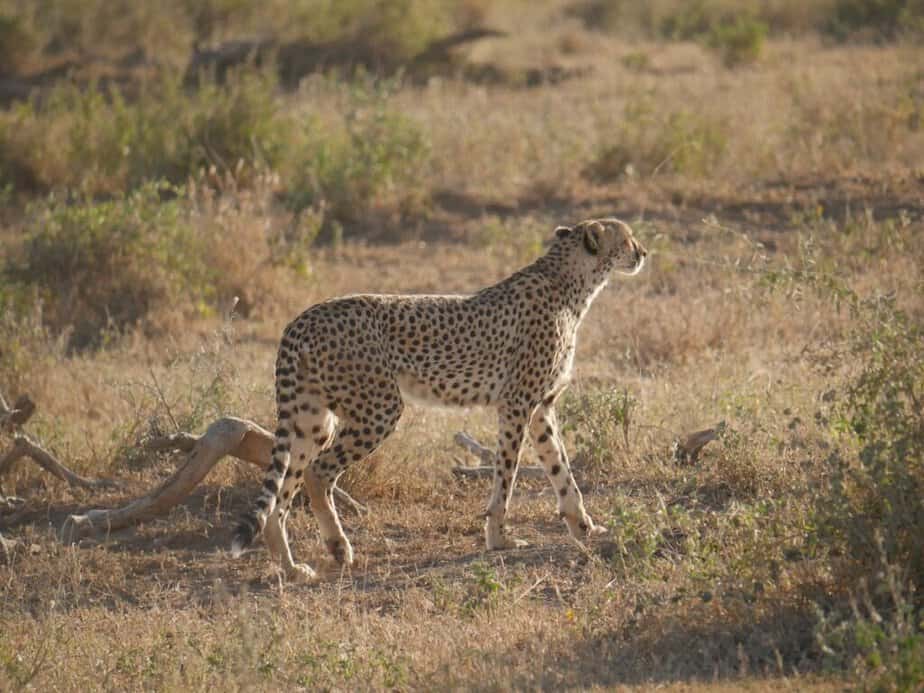
3. Samburu National Reserve – Best for Unique Wildlife & Off-the-Beaten-Path Adventures
For travelers seeking a more rugged and less crowded safari, Samburu National Reserve in northern Kenya offers a truly unique experience. Located along the banks of the Ewaso Ng’iro River, Samburu is a semi-arid, strikingly beautiful region that’s rich in wildlife and culture—without the crowds of the southern parks.
Why Samburu Stands Out
1. Home of the Samburu Special Five
Samburu is famous for animals that are rarely found in other parks, collectively known as the Samburu Special Five:
- Grevy’s zebra – thinner stripes and bigger ears than common zebras
- Reticulated giraffe – distinguished by its intricate, geometric coat pattern
- Gerenuk – the “giraffe antelope” that stands on its hind legs to feed
- Beisa oryx – with its long, straight horns and light body
- Somali ostrich – with distinctive blue legs and neck
These species thrive in Samburu’s dry scrubland and are a major draw for repeat safari-goers and wildlife photographers.
2. Predator Sightings
Despite being a lesser-known destination, Samburu is excellent for spotting big cats, especially leopards and lions. Cheetahs also roam the open plains, and sightings of African wild dogs are increasing.
3. Rich Samburu Culture
Like the Maasai in the south, the Samburu people are pastoralists with deep traditions and colorful attire. They are known for their vibrant beaded jewelry and their close connection to the land. Many lodges offer cultural visits, where guests can learn about Samburu customs, music, and daily life.
4. Untouched Wilderness & Exclusive Feel
Samburu’s remote location means fewer tourists, giving you the feeling of having the reserve almost to yourself. Game drives here are peaceful and unhurried, with ample time to soak in the wild beauty.
5. Ewaso Ng’iro River: Lifeline of the Park
This permanent river draws animals year-round and is especially good for spotting elephants bathing, crocodiles sunning on the banks, and birds darting through the trees.
Travel Tips for Samburu
- Best Time to Visit: June–October and December–March (dry seasons)
- Accessibility: Short flight from Nairobi (1 hour) or a 6–7 hour drive
- Ideal For: Wildlife photographers, seasoned safari-goers, culture seekers, travelers avoiding crowds
Samburu is an underrated gem that rewards adventurous travelers with rare wildlife, authentic culture, and stunning landscapes. It’s a destination that feels raw and real—perfect for those looking for something different in their Kenyan safari.
Next, let’s journey to Tsavo East and West National Parks, Kenya’s largest protected wilderness area.
4. Tsavo East & Tsavo West – Best for Wilderness, Variety, and Off-Grid Adventure
If you’re drawn to the idea of vast landscapes, raw wilderness, and fewer tourists, then Tsavo East and Tsavo West National Parks should top your list. Together, these two adjoining parks form Kenya’s largest protected area, spanning over 22,000 square kilometers—a space so expansive that it can feel like having the wild all to yourself.
Tsavo is ideal for intrepid travelers and those looking to combine safari with beach holidays, as it’s conveniently located halfway between Nairobi and the Kenyan Coast.
Tsavo East – Land of Red Elephants
Tsavo East, the larger of the two, is best known for its “red elephants”—so called because they love to bathe in the park’s iron-rich red soil, giving them a rusty hue. The park’s open terrain, sparse vegetation, and dusty earth provide wide panoramic views, ideal for spotting animals in the distance.
Highlights:
- Galana River: A lifeline cutting through the arid landscape, where crocodiles, hippos, and elephants gather.
- Lugard Falls & Yatta Plateau: East Africa’s longest lava flow, perfect for geological and nature lovers.
- Mudanda Rock: A massive natural rock outcrop with sweeping views of the park and a watering hole below.
- Excellent birdwatching with over 500 recorded species.
Because it’s relatively underdeveloped compared to other parks, Tsavo East offers long, uninterrupted game drives, making it feel more adventurous and authentic.
Tsavo West – Diverse Landscapes & Hidden Treasures
Tsavo West is more dramatic and lush than its eastern counterpart, with volcanic hills, ancient lava flows, and natural springs creating a rich tapestry of habitats.
Main Attractions:
- Mzima Springs: A beautiful oasis where you can walk along shaded paths to see hippos and crocodiles through an underwater viewing chamber.
- Ngulia Rhino Sanctuary: One of the few places in Kenya where you can still spot the black rhino in a protected environment.
- Shetani Lava Flow: A surreal black lava field formed from a volcanic eruption hundreds of years ago—great for geological photography.
- Chaimu Crater: Ideal for short hikes and panoramic views.
- Excellent leopard sightings, especially near the Ngulia Hills area.
What Makes Tsavo Unique?
Unlike Masai Mara or Amboseli, Tsavo offers isolation, variety, and scale. It’s not uncommon to go on a game drive for hours without seeing another vehicle. For some, this solitude is the ultimate luxury—true wilderness without Wi-Fi or crowds.
Travel Tips for Tsavo
- Best Time to Visit: June to October and January to February
- Accessibility: Easily reached by road or train from Nairobi or Mombasa; domestic flights also available
- Ideal For: Adventurers, nature lovers, honeymooners seeking privacy, travelers combining safari with coastal relaxation
Tsavo + Coast = The Perfect Combo
Many travelers choose to pair Tsavo with Kenya’s coast for the ultimate trip—safari by day, beach by evening. After a few days spotting lions and elephants, unwind on the white sands of Diani Beach, Watamu, or Malindi—all just a short train or car ride away.
Tsavo is for those who want a raw, untamed African experience—less commercial, more wild. It’s not about ticking off the Big Five in a day. It’s about surrendering to nature’s rhythm, hearing silence, and connecting with the true heart of Kenya.
Up next, we’ll briefly highlight other notable safari spots in Kenya that may not be as famous, but are well worth considering for a tailored adventure.
Honorable Mentions: Other Noteworthy Safari Parks in Kenya
While the Masai Mara, Amboseli, Samburu, and Tsavo are the best-known safari destinations in Kenya, the country is dotted with hidden gems and specialized wildlife conservancies that can be perfect depending on your interests and itinerary.
Here are three more parks that deserve serious consideration:
1. Lake Nakuru National Park – Best for Flamingos and Rhinos
Located in Kenya’s Great Rift Valley, Lake Nakuru National Park is famous for its pink-hued flamingo flocks, which once numbered in the millions. While the flamingo population has fluctuated due to rising water levels, the park remains a hotspot for birdwatchers and photographers.
But there’s more to Nakuru than birds. The park is also one of the best places in Kenya to spot both black and white rhinos, thanks to its intensive conservation efforts. In addition to rhinos, you’ll also find lions, leopards, giraffes, and baboons within its compact boundaries.
- Ideal For: Birdwatchers, families, and those with limited time (1–2 day visits)
- Accessibility: Easy 3-hour drive from Nairobi
2. Laikipia Plateau – Best for Conservation and Unique Safari Experiences
Located north of the Aberdare Range, the Laikipia Plateau is a collection of private conservancies such as Lewa, Ol Pejeta, and Borana, offering intimate, conservation-focused safari experiences.
Laikipia is home to endangered species like the black rhino, Grevy’s zebra, and African wild dog. Some lodges even offer horseback safaris, camel treks, and walking safaris.
- Ideal For: Conservation-focused travelers, luxury safari-goers, and active adventurers
- Accessibility: Short flights or 4-5 hour drive from Nairobi
3. Meru National Park – Best for Seclusion and Untouched Wilderness
Famed as the home of Elsa the Lioness from Born Free, Meru is one of Kenya’s least visited national parks. It offers thick jungle, winding rivers, and lush grasslands teeming with animals—without the crowds.
- Ideal For: Off-the-grid explorers, nature lovers
- Accessibility: Charter flight or long drive from Nairobi
Each of these parks brings something unique to the table—whether it’s exclusivity, rare species, or deeply immersive encounters. Combined with Kenya’s top parks, they allow for customized, multi-stop itineraries that cater to your every safari dream.
Next, we’ll move into How to Choose the Best Kenyan Safari for You, a detailed section to help match your preferences, timeline, and budget with the ideal destination.
How to Choose the Best Kenyan Safari for You
Choosing the best Kenyan safari isn’t just about picking the most famous park—it’s about matching your interests, travel style, and expectations with the right destination. Kenya offers incredible diversity across its safari landscapes, so asking the right questions can help you narrow down the perfect itinerary.
Here’s a practical guide to help you choose.
🎯 1. What’s Your Travel Goal?
- Want to see the Big Five?
→ Go to Masai Mara or Ol Pejeta Conservancy (Laikipia) - Interested in rare and unusual species?
→ Visit Samburu or Meru National Park - Craving elephant encounters and iconic landscapes?
→ Head to Amboseli for Kilimanjaro views and massive herds - Prefer fewer crowds and true wilderness?
→ Explore Tsavo East/West or Laikipia conservancies - Looking to combine beach and bush?
→ Plan a Tsavo + Coast combo or fly to Diani after Masai Mara
🗓️ 2. What Time of Year Are You Traveling?
Kenya’s seasons influence animal behavior and visibility.
- Best overall safari months:
June to October – dry season, animals are easier to spot - Best for the Great Migration:
July to October – thousands of wildebeest cross into Masai Mara - Best for birding:
November to April – wet season brings migratory birds - Avoid:
April and May (long rains), which can disrupt road access and limit visibility
💸 3. What’s Your Budget?
Kenya caters to luxury, mid-range, and budget travelers, but some parks are more cost-effective than others.
| Budget | Best Choices | Tips |
|---|---|---|
| Luxury | Masai Mara, Laikipia, Lewa | Fly-in safaris, private guides, spa services |
| Mid-range | Amboseli, Samburu, Tsavo West | Group lodges, scheduled flights or road transfers |
| Budget | Tsavo East, Nakuru | Camping, self-drive safaris, park entry discounts in low season |
Pro Tip: Traveling in the shoulder seasons (June or November) can give you great experiences at better rates.
👨👩👧 4. Who Are You Traveling With?
- Solo travelers or couples:
→ Try fly-in safaris to Masai Mara or luxury camps in Laikipia for privacy and ease - Families with kids:
→ Amboseli and Lake Nakuru offer short, easy game drives and good road access - Photographers:
→ Masai Mara for predators, Samburu for unique species, Amboseli for Kilimanjaro backdrops - Adventurers:
→ Tsavo West and Meru for hiking, less-developed lodges, and fewer tourists
🔄 5. How Much Time Do You Have?
- 3–4 Days:
→ Visit one park (e.g. Masai Mara or Amboseli), fly in and out - 5–7 Days:
→ Combine two parks, such as Mara + Nakuru or Samburu + Laikipia - 10+ Days:
→ Build a full circuit: Masai Mara + Amboseli + Tsavo + Coast
📌 Sample Itinerary Ideas
Classic Kenya Safari (7 Days):
- Masai Mara (3 nights)
- Lake Nakuru (1 night)
- Amboseli (2 nights)
Luxury Northern Circuit (8 Days):
- Samburu (2 nights)
- Laikipia (3 nights)
- Masai Mara (3 nights)
Bush & Beach (10 Days):
- Tsavo East/West (3–4 nights)
- Diani Beach or Watamu (5 nights)
No matter your style or timeline, there’s a Kenyan safari that will meet your expectations—and exceed them. It’s all about being intentional with your choices and working with reputable tour operators or travel experts to tailor your itinerary.
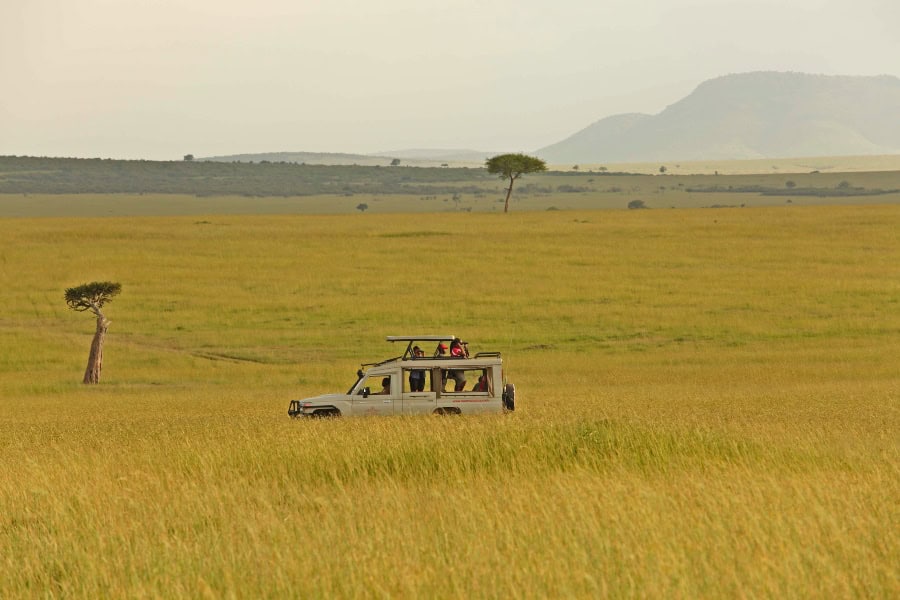
Coming up next: Tips for Planning Your Kenyan Safari, including travel logistics, packing essentials, and insider advice for a smooth, stress-free adventure.
Tips for Planning Your Kenyan Safari
Once you’ve chosen your ideal Kenyan safari destination, the next step is to prepare for an unforgettable adventure. Whether it’s your first time in Africa or you’re a seasoned traveler, the following tips will help you make the most of your safari experience—safely, smoothly, and memorably.
✈️ 1. Getting to Kenya & Safari Transfers
- International Access:
Kenya’s main entry point is Jomo Kenyatta International Airport (NBO) in Nairobi. Some coastal safaris may route through Moi International Airport (MBA) in Mombasa. - Getting to the Parks:
- Road safaris are more affordable and scenic but take longer (4–7 hours).
- Fly-in safaris are ideal for luxury travelers or those short on time. Domestic flights connect Nairobi to Masai Mara, Samburu, Amboseli, and even Tsavo.
- New SGR train from Nairobi to Mombasa is a good mid-range option for combining safari and beach holidays.
- Road safaris are more affordable and scenic but take longer (4–7 hours).
🎒 2. What to Pack for Your Safari
- Clothing:
- Neutral colors like beige, olive, and khaki (avoid bright colors or dark blue/black that attract tsetse flies)
- Lightweight layers for hot days and cool mornings/evenings
- Comfortable walking shoes or safari boots
- Wide-brim hat and sunglasses
- Neutral colors like beige, olive, and khaki (avoid bright colors or dark blue/black that attract tsetse flies)
- Essentials:
- High-SPF sunscreen
- Binoculars (a must for spotting distant wildlife)
- Camera with zoom lens
- Insect repellent
- Travel adapters and power banks (some remote lodges use solar power)
- High-SPF sunscreen
- Documents & Health:
- Passport and visa (Kenya now offers an e-visa)
- Yellow fever certificate (required for some travelers)
- Travel insurance (recommended)
- Vaccinations: Consult a travel clinic for typhoid, hepatitis A/B, and malaria prophylaxis
- Passport and visa (Kenya now offers an e-visa)
🦁 3. On Safari: Etiquette and Safety
- Stay in the vehicle unless your guide says otherwise. Wildlife is unpredictable.
- Be quiet and respectful during game drives to avoid startling animals.
- Don’t litter or feed wildlife—it disrupts the ecosystem.
- Ask questions! Guides are knowledgeable and love to share stories about the bush.
💡 4. Booking Tips
- Book early, especially for peak migration season (July–October).
- Use licensed tour operators or reputable travel agencies—preferably ones affiliated with EcoTourism Kenya, KATO, or Travelife.
- Consider private conservancies for more exclusive experiences.
Planning a safari is part of the adventure. With the right preparation, you’ll feel confident, comfortable, and completely immersed in the incredible landscapes and life-changing moments that Kenya has to offer.
Conclusion: Your Ultimate Kenyan Safari Awaits
Kenya’s safari destinations are nothing short of extraordinary. From the sweeping plains of the Masai Mara and the majestic elephants of Amboseli, to the rare wildlife of Samburu and the vast wilderness of Tsavo, each park offers its own unique magic.
The best Kenyan safari for you depends on what you seek—whether it’s the thrill of witnessing the Great Migration, intimate encounters with rare species, immersive cultural experiences, or simply a peaceful escape into nature’s wild heart. Kenya is a land of contrasts and diversity, ensuring every traveler finds a safari that resonates deeply.
Ready to Experience Kenya’s Wild Wonders?
Don’t just dream about Africa—make it your next reality. The adventure of a lifetime is waiting, and the time to book your Kenyan safari is now.
- Explore the Masai Mara’s legendary wildlife.
- Discover Amboseli’s elephants framed by Kilimanjaro’s snowy peaks.
- Venture off the beaten path in Samburu’s rugged beauty.
- Immerse yourself in the vast, untamed wilderness of Tsavo.
Wherever you choose, Kenya’s rich wildlife and warm hospitality will leave you inspired, refreshed, and forever changed.
Book Your Kenyan Safari Today!
Ready to start planning? Contact trusted safari experts to tailor your perfect trip. Whether it’s a luxury fly-in experience, a family adventure, or a photographer’s dream, Kenya’s wild heart is ready to welcome you.
👉 Don’t wait—your Kenyan safari adventure begins here. Get in touch now and make memories that will last a lifetime!
